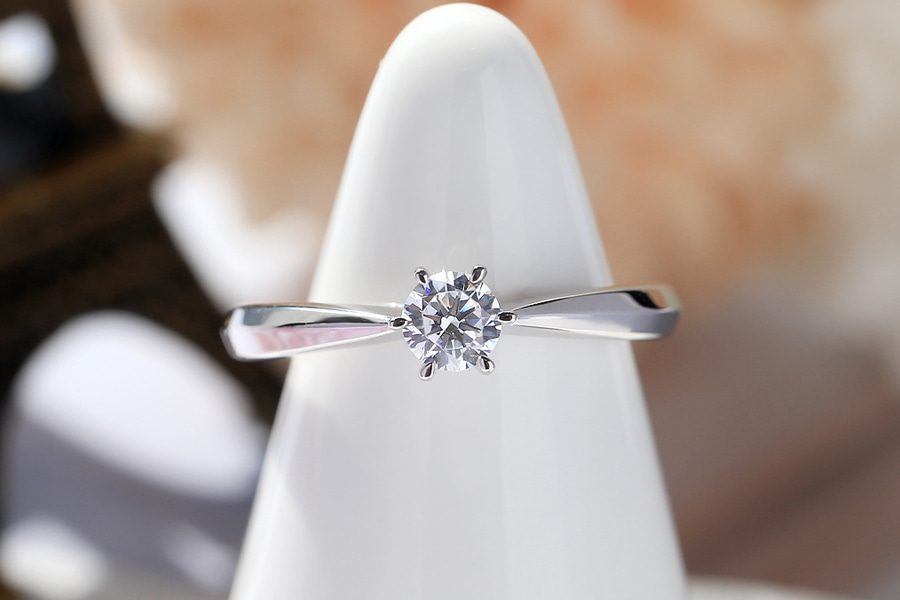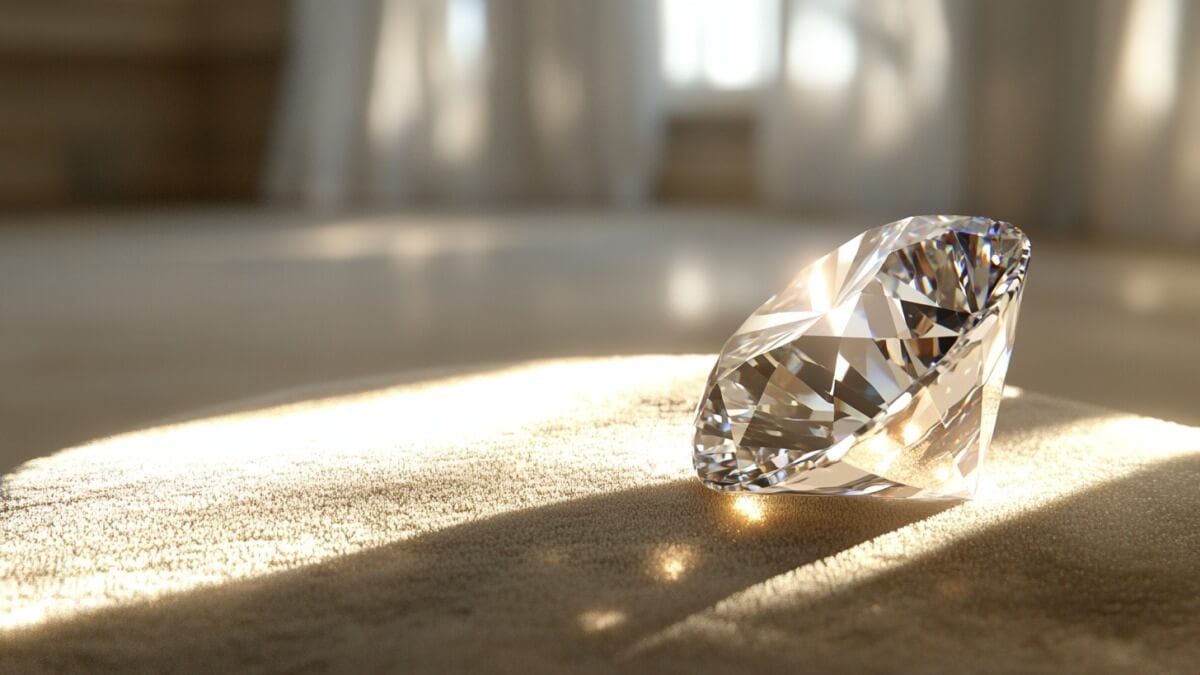What is a Prong Setting?
Understanding the Basics of Prong Settings
At its core, a prong setting is a way of getting a diamond in place by utilizing small metal “prongs” or claws to hold the stone. These prongs hold the diamond’s edges (or support) and secure it in place, allowing the diamond to sit safely in the ring while as yet being visible from almost every angle.
A prong setting is characterized by its minimal metal coverage, making it a popular decision for the individuals who want the diamond to take the all important focal point. With more of the diamond uncovered, it allows for maximum light reflection, leading to increased brilliance and sparkle.
Yet, prong settings don’t simply look great — they’re also extraordinarily viable at getting the stone. At the point when appropriately set, the prongs hold the diamond immovably in place, keeping it from moving or falling out 랩다이아 반지 프롱.
Why Pick a Prong Setting for Lab Diamonds?
The Advantages of Prong Settings
There are several reasons why prong settings are a popular decision for lab diamond rings:
Showcase the Diamond – Prong settings uncover more of the diamond’s surface, allowing it to splendidly mirror more light and sparkle. This is particularly important for lab diamonds, which are known for their inconceivable sparkle.
Security – When appropriately done, prongs safely hold the diamond in place, offering peace of brain. Despite the fact that more of the diamond is uncovered, the prongs can in any case be adequately strong to keep the diamond from falling out.
Versatility – Prong settings can accommodate almost any diamond shape, making them exceptionally versatile. Whether you have a round, oval, or emerald cut lab diamond, prong settings can be redone to suit.
Immortal Look – The prong setting has been a favorite for hundreds of years and remains a classic decision for engagement rings and other fine gems. Its straightforward elegance makes it suitable for both present day and vintage plans.
Types of Prong Settings
A Breakdown of Popular Prong Styles
While choosing a prong setting for your lab diamond ring, you’ll experience a variety of prong styles. Each style has its special features and advantages, so realizing the difference is important.
Prong Setting
The Most Common Prong Style
The 4-prong setting is the most popular prong style for engagement rings and diamond rings in general. This setting features four metal prongs, which secure the diamond at four places. The 4-prong setting offers a great balance of safety and style, with enough prongs to keep the diamond secure however not so many that the metal distracts from the stone.
The 4-prong style works well for most diamond shapes and is especially common for round-cut diamonds. It leaves the diamond presented to light from numerous angles, maximizing its brilliance.
Prong Setting
Extra Security for Your Diamond
The 6-prong setting adds two more prongs to the typical 4-prong style, offering extra security for the diamond. This setting is ideal for larger diamonds, as it offers additional help, diminishing the risk of the stone turning out to be free or falling out after some time.
The 6-prong setting is frequently utilized for diamonds that may encounter a great deal of wear and tear, or for the individuals who want a smidgen more peace of psyche while wearing their rings consistently. While it offers greater security, the extra prongs can marginally darken the diamond, lessening the amount of light that reaches the stone. In any case, the security it gives frequently offsets this minor disadvantage.
Prong Setting
Minimalistic and Elegant
For the individuals who incline toward a smooth, current look, the 3-prong setting may be a great decision. This setting utilizes only three prongs to get the diamond, giving it an exceptional, minimalistic appearance. The 3-prong setting is frequently utilized for diamonds in more artistic or contemporary plans.
One of the critical advantages of the 3-prong setting is that it allows for a great deal of light to reach the diamond, making it sparkle splendidly. In any case, the 3-prong configuration is not as secure as the 4-prong or 6-prong settings, so it’s most appropriate for smaller lab diamonds or the people who aren’t as concerned about security.
V-Prong Setting
Adding a One of a kind Twist
The V-prong setting is a variation of the traditional prong setting. Instead of the usual straight prongs, each prong is shaped like a “V” to create a more distinctive, elegant look. This setting is particularly appropriate for diamonds with sharp corners, similar to princess cut or asscher cut diamonds, as the V-prongs assist with shielding the edges from chipping.
The V-prong setting offers a mix of safety and style, making it an appealing decision for the individuals who want something somewhat not quite the same as the standard prong setting.
Twofold Prong Setting
Extra Strength and Stability
The twofold prong setting utilizes two prongs to get each of the diamond’s corners, which increases the security of the stone. This setting is frequently utilized for diamonds with sharp edges, for example, princess cut diamonds, which are prone to damage in the event that the prongs are not adequately solid.
By involving two prongs for each corner, this setting gives an extra layer of protection while as yet allowing the diamond to sparkle and sparkle. The twofold prong setting also offers a one of a kind, somewhat more vintage look.
What Prong Settings Mean for the Diamond’s Appearance
Letting the Lab Diamond Sparkle
The prong setting’s primary appeal lies by they way it impacts the appearance of the diamond. How it’s done:
Maximizing Brilliance and Sparkle
What Prongs Mean for Light Reflection
Because prongs hold the diamond as high as possible and uncover the majority of the stone to light, prong settings are amazing for maximizing brilliance and sparkle. The more light that stirs things up around town, the more it can reflect, which brings about a sparkling impact that is one of the best characteristics of lab diamonds.
Enhancing the Diamond’s Size
The Illusion of Larger Stones
Another advantage of prong settings is that they can make a diamond appear larger than it is. Since the prongs are relatively small and don’t cover a significant part of the diamond, the stone appears to have more presence on the finger.
How Prong Settings Make Diamonds Appear Larger
The Optical Stunt of Prongs
The optical illusion created by prong settings is particularly noticeable with diamonds that have a lower carat weight. The way the prongs hold the diamond and open it to light makes the stone appear to be larger and more significant than it could otherwise appear. This can be a major upside for the individuals who want a larger-looking diamond without the expense of a higher carat weight.
Durability of Prong Settings
Do Prong Settings Keep Your Diamond Secure?
Although prong settings offer great brilliance, taking into account their durability is also essential. When planned correctly, prongs hold the diamond safely. In any case, they’re not indestructible. Prongs can wear down over the long haul, potentially compromising the security of the diamond.
Everyday Wear and Tear
Can Prongs Withstand Daily Use?
One of the main considerations with prong settings is the way they hold up with daily wear. Prongs are generally durable, however over the long haul, they can get bowed or worn down, especially assuming the ring is exposed to unpleasant activities like heavy lifting or working with devices.
To keep your prong setting with everything looking great, it’s essential to get your ring reviewed regularly by a professional goldsmith. This guarantees that the prongs remain secure and the diamond stays in place.
What Prongs Mean for Long-Term Durability
Strength, Stability, and Security
At the point when set correctly, prongs can last for many years with next to no issues. Be that as it may, after some time, even the most safely set diamonds can relax somewhat, especially on the off chance that the prongs aren’t as expected maintained.
For rings that experience daily wear, you may want to pick a 6-prong or twofold prong setting for extra stability. These settings give more security, diminishing the risk of losing the stone over the long haul.
Picking the Right Prong Setting for Your Lab Diamond
Factors to Consider While Picking Prongs
With regards to picking the ideal prong setting for your lab diamond ring, consider the accompanying factors:
Your Way of life and Activity Level
How Active You Are Ought to Impact Your Decision
Assuming that you lead an active way of life, you’ll require a prong setting that can withstand the wear and tear of daily life. 6-prong settings or twofold prong settings are great decisions for added security.
Diamond Shape and Size
Matching the Right Prong Setting to the Diamond
Certain prong settings are more qualified for particular diamond shapes. For example, round diamonds frequently look great in 4-prong settings, while princess and asscher cuts really do well with V-prong settings to safeguard the corners.
Ring Style and Plan Inclinations
Stylish Decisions and Prong Settings
Your personal style plays a significant job in picking the right prong setting. Whether you favor a classic 4-prong plan or a more extraordinary V-prong setting, the setting ought to match your overall ring plan inclinations.
Common Prong Setting Issues
Potential Issues with Prong Settings
While prong settings are popular and secure, they can have a few potential issues. We should explore common issues and how to address them.
Conclusion
Is a Prong Setting the Best Decision for Your Lab Diamond Ring?
A prong setting is a magnificent decision for showcasing your lab diamond. With its ability to maximize brilliance, offer security, and give a classic style, it’s no wonder that prong settings are a favorite for engagement rings. Notwithstanding, similar to any setting, they accompany considerations, especially regarding maintenance and wear and tear.






